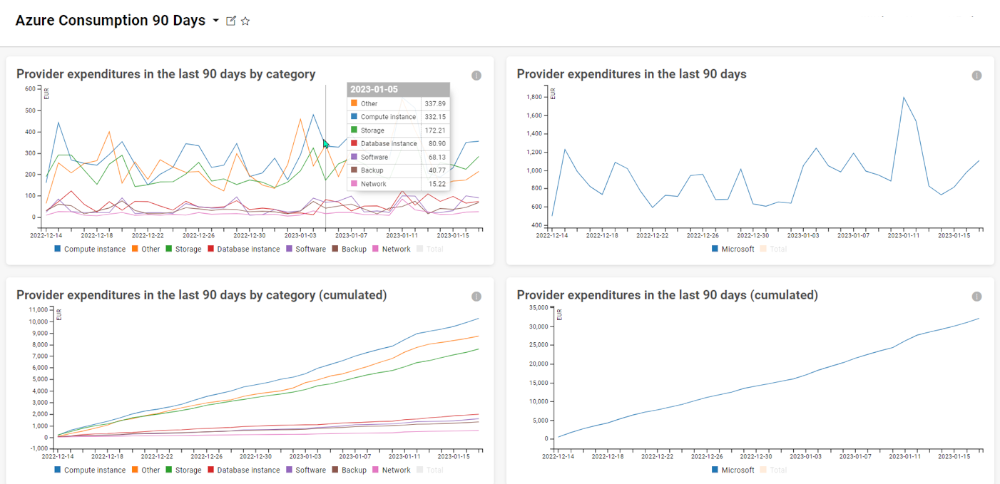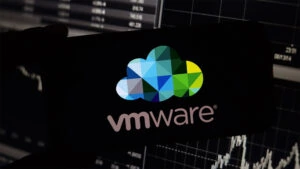According to the latest forecast by US analyst firm Forrester, spending on public clouds is expected to reach over one trillion US dollars in 2026. This is almost 50 percent more than the costs calculated by Gartner for this year.
Despite this dynamic growth, most companies still have no transparency regarding the detailed costs of their cloud resources. The consequences are well documented by many surveys and studies: In practice, the unnecessary additional expenditure is up to a third, or a good 200 billion euros. For example, 72 percent of the IT decision-makers surveyed by Forrester stated that they had exceeded their cloud budget in the last financial year. Over-utilization of resources, unforeseen cost factors and ineffective cost management all play into this. The fact that more and more teams and functions in companies are responsible for cloud costs makes it even more difficult to gain visibility of these costs in terms of a consolidated overview.
Lots of data, little clarity and allocation
Invoices from cloud providers such as AWS, Google Cloud Platform or Microsoft Azure are often perceived as intransparent due to their complexity and level of detail. For example, the costs for different instance types are listed depending on the configuration (CPU, memory, etc.) and region, the fees for various storage services such as object storage (e.g. S3 at AWS), block storage and file storage, the costs for data transfer or database services as well as other service-specific fees, for example for the use of APIs or additional services, such as for machine learning services, etc.
The large number of service options and their different pricing structures make it difficult to identify the exact origin of the costs. Costs for various resources and services are often presented as a collective invoice without a detailed breakdown per project or department, which makes internal cost allocation difficult. In this case, detailed tagging of resources helps to allocate costs to specific teams, projects or services.
Optimize cloud usage with FinOps
For some time now, IT leaders have been trying to get a handle on spiraling costs with Financial Operations (FinOps). The evolving discipline and cultural practice of cloud financial management involves the implementation of processes, tools and policies that enable companies to gain visibility, better manage and optimize their cloud spend.

This includes the use of cost management tools that integrate topics such as monitoring or software asset management, the introduction of clear cost allocations and responsibilities, the automation of processes for cost optimization and the promotion of a culture of cost awareness and collaboration.
However, FinOps initiatives are often difficult to implement in practice because they require cultural and organizational change. Companies need to overcome traditional silos between finance, IT and business teams and develop a common understanding of cloud costs. Integrating financial and operational data also takes time and resources. In addition, the lack of tools and expertise can make implementation difficult. This is why more and more companies are opting for externally provided FinOps managed services.
Identify typical cost drivers
A target-oriented FinOps approach is to identify the most common cost drivers and to understand which costs could be avoided and how they negatively impact the budget. Important cost drivers are:
➤ Overprovisioning or “sleeping” instances: Companies tend to acquire more resources than necessary. Without a transparent overview, unused resources can cause continuous costs.
➤ Unforeseen or hidden costs: Unexpected costs, especially due to data transfer, can significantly exceed the expected cloud bills.
➤ Underutilized servers: Monitoring data usage and server utilization is important to identify underutilized resources and adjust or divest accordingly.
➤Regional cost differences: The prices for cloud services vary depending on the region. Significant savings can be achieved by selecting the right region.
➤Selecting instance types: The correct selection of instance types is important, as higher performing instances incur higher costs. Reserved instances should be carefully examined and compared with on-demand options.
➤Compliance and security: Adherence to compliance requirements and security measures can result in additional costs that need to be monitored and managed.
Understanding these aspects and implementing effective cost control strategies is essential to sustainably reduce cloud spend. According to a report by the US data analysis company Anodot, data and storage optimization accounts for around 80 percent of savings.
Concrete added value through the cloud
Recognizing usage patterns and eliminating unused instances are key components of cloud cost management. This process is supported by monitoring and alerting systems that continuously monitor the capacity parameters of the cloud services. These systems automatically report when cloud systems are “operational but unused” and suggest measures such as utilization, switching to smaller systems or terminating the cloud service. Integrated escalation mechanisms ensure that cost center managers are informed or systems are automatically shut down. These systems also monitor compliance with SLAs for cloud components in real time.
An effective method is also to identify and deactivate unused accounts through software asset management tools, which can enable annual savings of up to 30 percent for large companies, for example by switching off MS 365 subscriptions. Adjusting subscriptions according to actual usage is also cost-saving, as many users have expensive subscriptions but only need basic features that can be covered by cheaper subscriptions.
Another approach to cost savings is the use of “Bring Your Own License” (BYOL) rights. Companies that transfer their existing Oracle on-premises licenses to the cloud can also save over 30 percent of their annual license costs for SQL databases.
These examples illustrate how significant cost savings can be realized through integrated FinOps measures for cloud cost management.






